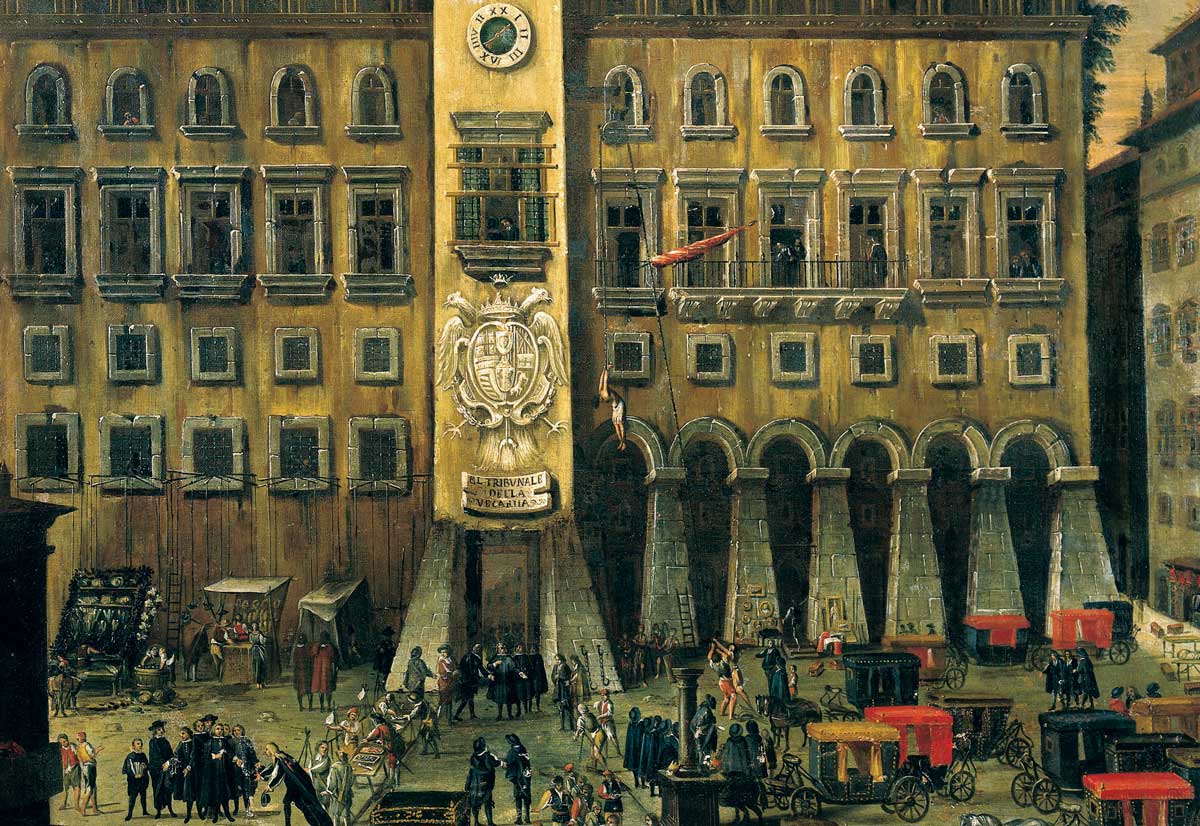Playing Saints
Unmasking an audacious saintly fraud in early modern Naples.

If we believe the documents that appeared in the Kingdom of Naples in the 1650s, there lived in the 12th century a giant named Giovanni Calà. He was so strong that he could kill ferocious beasts with his bare hands. As a soldier in Emperor Henry VI’s army, Giovanni not only defeated hundreds of enemies on horseback but also slew another giant on the battlefield. When Giovanni was severely wounded, he narrowly cheated death. He then left the military to become a saintly hermit who performed Jesus-like miracles. Carlo Calà, a lawyer from Calabria, submitted these documents about Giovanni – all forged, of course – to the Roman Church authorities for verification, as he hoped to have his presumed ancestor proclaimed a saint. In A Fake Saint and the True Church, Stefania Tutino tells the absorbing story of Carlo’s audacious attempt to plant a fake holy man into Church history.
Carlo Calà must have known that his chances of success were slim. Sainthood was an increasingly contested construct in early modern Europe. Its very basis had been called into question from 1517 onwards, when Protestant Reformers, such as Martin Luther and John Calvin, denounced the cult of saints, their images and their relics, both on theological grounds (pointing out that such cults were not attested to in the Bible) and because they thought that most relics were fakes. The Catholic Church felt the need to protect itself against the accusation of promoting undeserving mortals to sainthood. It reacted by imposing a sanctity gap: new creations of saints for the whole Catholic Church (so-called canonisations) were put on hold from 1523 to 1588. What is more, the Roman Curia created a new administrative department, the Congregation of Rites, whose task was to subject all claims to sainthood to detailed legal and historical scrutiny. Before they even reached the Rites Congregation, such claims could already be stopped in their tracks by the Congregations of the Holy Office (also known as Inquisition) and the Index of Forbidden Books. It is no surprise that the Catholic Church, from around 1600, gained new-found confidence in its ability to distinguish actual saints from fake pretenders.
In consequence, the canonisation of a hitherto unknown person to history became nearly impossible. Tutino shows why, nevertheless, the rich Calabrian Carlo Calà, who was a high-ranking government official in Naples, tried to push this canonisation through. It was mainly out of vanity. Carlo sought to create a respectable ancestry for himself and thereby to gain entry into the exclusive ranks of the old Neapolitan nobility. The necessary medieval-looking documents, as well as the requisite relics, were provided by the forger Ferrante Strocchi, who was allegedly paid the handsome sum of three-quarters of a million dollars in today’s money.
We are left uncertain as to whether Carlo Calà was aware of the forgery or whether he was fooled by Strocchi – though the former possibility seems likely. Tutino is rightly more interested in what the discussion of fake sanctity tells us about the limits of credulity within Catholicism, about the competition between central and local Church authorities and about the collusion, within Naples, between the secular government and the archbishop.
Different Church institutions eventually contributed to the unmasking of the forgeries. Overcoming the passive resistance of the archbishop of Naples, the Holy Office found and interrogated witnesses to the fraud. The Congregation of the Index of Forbidden Books, on the other hand, dealt with the content of the documents purporting to corroborate Giovanni Calà’s case for sanctity. Although some members of the Index felt that their Congregation should not deal with matters of history (as opposed to issues of morals and doctrine), the censors did apply philological and historical criteria when judging these texts. Despite recognising clear signs of forgery, however, they considered the truth of history to be more elusive and uncertain than that of theology. They reached no conclusion and suspended judgment.
Tutino’s careful, agile and eloquent presentation of these discussions is thought-provoking, but such discussions were not new: the Index and Holy Office had already dealt with historical questions in the 16th century, for example, when dealing with the history of the popes. In this context, it might have been fruitful to consider the evolution of the Church’s censorship of history and the relationship between history and theology over time. In the end, Giovanni’s case was shut down by the Holy Office only in 1680, after a very practical violation of its rules: Carlo Calà had invited people to venerate Giovanni’s relics.
A Fake Saint and the True Church: The Story of a Forgery in Seventeenth-Century Naples
Stefania Tutino
Oxford University Press 208pp £16.99
Buy from bookshop.org (affiliate link)
Stefan Bauer is Lecturer in History at King’s College London and the author of The Invention of Papal History (Oxford University Press, 2020).